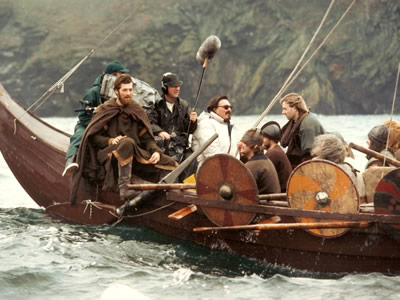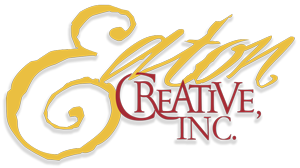 Director’s Notes, August 1988
Director’s Notes, August 1988
It’s finally over. For the past four months, the epic that is ‘Timeline’ has been on the road, filming in the Isle of Man in Britain, at several locations throughout Spain and now Turkey. Logistically it’s been a nightmare; six half hour television programs that recreate key moments in history as though television news was there at the time; the Crusades, the Black Death, the Mongol invasions of Europe, the Vikings, the fall of Moorish Spain and Christian Byzantium. This has truly been an international co-production with broadcasters in Spain and Turkey and a production company in Britain responsible for all local production details while eighteen international ‘department heads’ move from country to country to coordinate the chaos. My costume designer spent two months prior to shooting commuting almost daily between London, Madrid and Ankara. In Turkey, we had twenty wardrobe assistants building costumes from scratch since there are no wardrobe houses like in London or Madrid. My American production designer had to supervise teams of laborers building Byzantine fortifications and Silk Route towns in Turkey, dig plague pits and build Viking long ships on the Isle of Man while trying to persuade our Spanish art director that removing a hundred television antennas in an medieval walled city shouldn’t wait until the morning of filming.
Then there’s language. My Spanish producer speaks no English. My Turkish producer speaks a few words of English but better French. Nobody speaks Turkish except the Turks and my Spanish costume designer can only communicate with his Turkish assistant in Italian. But somehow we’ve done it, with more than 200 actors in speaking roles and many thousands of extras. As I go home to begin the editing, I have enough memories to last a lifetime. But of all the places where ‘Timeline’ has filmed, the island of Bozcaada is the most special to me.
Bozcaada is a primitive island, its mighty Seljuk fortress guarding the Dardanelles. This fortress has become Jerusalem, Tyre, Samarkand, Malaga and innumerable harbors, cities and marketplaces dictated by the requirements of the ‘Timeline’ scripts. Close to the border between Turkey and Greece and potentially a front-line zone if another war breaks out between them, Bozcaada is still off-limits to foreigners. This has protected it from tourist development up until now. Since we brought more than a thousand people across from the mainland over the filming period, it’s been a massive invasion for a island with a population of less than two thousand. Every hotel (there aren’t many and those that exist are quite primitive) and every restaurant has been taken over by cast and crew. The day before we started filming, I stood on the dock, watching the large ferry that makes the twice-daily run from the mainland, and realized that every vehicle and every creature on that boat was for ‘Timeline’. In addition to electrical trucks and grip vans and busloads of Turkish crew, they also unloaded three dancing bears with their gypsy handlers, two camels, thirty oxen, fifty horses and a group of forty Mongols who’d been recruited from a Tartar village deep in Eastern Anatolia. For two weeks ‘Timeline’ has been the sole focus of the island’s activities. As director and executive producer, I’ve been the king of the island. However I can’t have been a very good king since ‘Timeline’ has caused 300% inflation. I’m told we’ve pumped more money into Bozcaada’s economy in two weeks than they normally earn in a year.
 The people of Bozcaada have been so wonderfully involved in the filming. Before we began, my Turkish producer told me that island people would never agree to be extras; too distrustful of foreigners and with a peasant’s reticence. He was proved correct on the first day when less than twenty islanders turned up for the initial crowd call. But day by day the numbers increased until by the end hundreds of people have gathered each morning outside the dirt-floored warehouse that we’ve turned into our make-up and costume area. The women often cry if they’re not selected. And since we frequently need more extras than the island can provide; a boat has left at five each morning to pick up the inhabitants of a mainland village. At seven, these new extras arrive, stumbling onto the dock, laughing and giggling and amazed at the magic that is filmmaking. Once in front of camera, they are game for anything.
The people of Bozcaada have been so wonderfully involved in the filming. Before we began, my Turkish producer told me that island people would never agree to be extras; too distrustful of foreigners and with a peasant’s reticence. He was proved correct on the first day when less than twenty islanders turned up for the initial crowd call. But day by day the numbers increased until by the end hundreds of people have gathered each morning outside the dirt-floored warehouse that we’ve turned into our make-up and costume area. The women often cry if they’re not selected. And since we frequently need more extras than the island can provide; a boat has left at five each morning to pick up the inhabitants of a mainland village. At seven, these new extras arrive, stumbling onto the dock, laughing and giggling and amazed at the magic that is filmmaking. Once in front of camera, they are game for anything.
A week ago we filmed a scene where a crowd battles to get on board the few remaining boats evacuating Muslim refugees from Spain to Africa. Bozcaada is standing in for Malaga Harbor as Spanish monarchs Ferdinand and Isabella expel the last of the Moors from the kingdom of Granada. One old lady was clubbed to the ground three times by over-enthusiastic Spanish troops but got back to her feet each time. When I finally called “cut”, she waved triumphantly from one of the boats. I later learned our Turkish assistant director had promised extra money for those who made it to the boats, and extra money to any Spanish soldiers who stopped them. While I felt terribly guilty, the islanders loved it. Time and again I’ve been told they’re having the time of their lives. Many perform actions that would usually require trained stuntmen without ever being asked.
The Turkish film industry has a delightful custom of everyone applauding at the end of a successful shot. This has been especially noticeable on Bozcaada since large crowds have come down each day to watch us work. Several nights ago we started shooting at dusk and continued through until dawn. It was a complicated scene involving several burning buildings, scores of looting soldiers and dozens of refugees fleeing from a conquered city. Hundreds of islanders stayed to watch throughout the night, sitting up on the castle battlements that surround our location, a vast unseen audience viewing us like actors in a huge amphitheater. Every time I called “cut and print”, applause swept out of the darkness. In such primitive castle surroundings, with fires burning and torches blazing, several on my crew remarked how roles had been reversed. We were now players in a magical pageant. Reality had vanished with the daylight.
 Although I first scouted Bozcaada several months ago, I won’t soon forget my arrival a few days ahead of filming. Coming in by ferry from the mainland, the castle is the first thing you see. It was dusk and a pinpoint of light flickered in front of its walls. I joked to my assistant that they’d put a light in the window to welcome us. As we approached, the pinpoint of light expanded into a huge bonfire. The islanders had gathered to watch the arrival of “the Pasha” (as I came to be called). Chairs were set around the fire in front of the castle on the huge medieval dock that had been built out into the harbor especially for ‘Timeline’. Here waited the Turkish advance crew, dignitaries of the island and the Commander of the military garrison. We drank wine and toasted eternal Turkish, Spanish, British and American friendship (the member nations of the television co-production).
Although I first scouted Bozcaada several months ago, I won’t soon forget my arrival a few days ahead of filming. Coming in by ferry from the mainland, the castle is the first thing you see. It was dusk and a pinpoint of light flickered in front of its walls. I joked to my assistant that they’d put a light in the window to welcome us. As we approached, the pinpoint of light expanded into a huge bonfire. The islanders had gathered to watch the arrival of “the Pasha” (as I came to be called). Chairs were set around the fire in front of the castle on the huge medieval dock that had been built out into the harbor especially for ‘Timeline’. Here waited the Turkish advance crew, dignitaries of the island and the Commander of the military garrison. We drank wine and toasted eternal Turkish, Spanish, British and American friendship (the member nations of the television co-production).
My production designer, Peter Wooley, then took me into the castle to show what he’d built for ‘Timeline’. Peter is celebrated in Hollywood for his production design on movies like Mel Brooks’ ‘Blazing Saddles’, ‘High Anxiety’ and the chilling ‘The Day After’. On Bozcaada he’d created a miracle. Only weeks before there’d been nothing but ruins inside the castle walls; now there was an authentic Middle Eastern town. Narrow streets curved away from a central market square. A stone well stood in the center. Market stalls and colorful awnings filled every available space. Water ran into troughs through ancient conduits. It was a world just waiting for people and animals to bring it magically to life.
Timeline first aired on PBS in 1989 to critical acclaim. It’s also aired in more than 40 countries worldwide. The full series can be seen here.
Peter accomplished this in just a week with our Turkish set-techs he has dubbed “the Flying Zambenes” (named for a famous circus family). These twelve men are like a circus act. They dress in identical blue coveralls and do everything at a run. If they ever get any rest, I’ve never seen it. They work all day and most of the night, managing to stay just ahead of the main unit’s needs. As Peter says, “a project on the scale of ‘Timeline’ is like a ravenous beast. All you can do is feed it with the sets, props, costumes and actors it needs to keep shooting. If you’re not able to keep it at bay, it will eat you alive.”
Over a thousand beautiful costumes had been shipped to Bozcaada from our wardrobe “factory” in Istanbul but they were too clean, too new. Our Turkish costume designer was in floods of tears as everyone helped lay these costumes made of silk, leather, wool and cotton out in the dirt road so that everyone who passed could trample them in the dust. It rained that night so next day we hung the dirt-smeared costumes up to dry on fifty great washing lines strung from house to house. Now the costumes look correct on the screen, with a feel of clothes that have been worn for a lifetime, but my costume designer may never forgive me.
Turkey has been our final location. Fifteen weeks after starting out on the Isle of Man, the series is mostly in the can with only the newsroom segments to shoot in our London studio. Of all our locations, scattered across Britain, Spain and Turkey, the Island of Bozcaada will remain my favorite. Its people have given me and my crew so much. When we left the other day, the whole island came down to the ferry to say goodbye. As the ferry pulled away and the castle gradually disappeared from view, I felt like a king going into exile. Welcome back to the real world!



